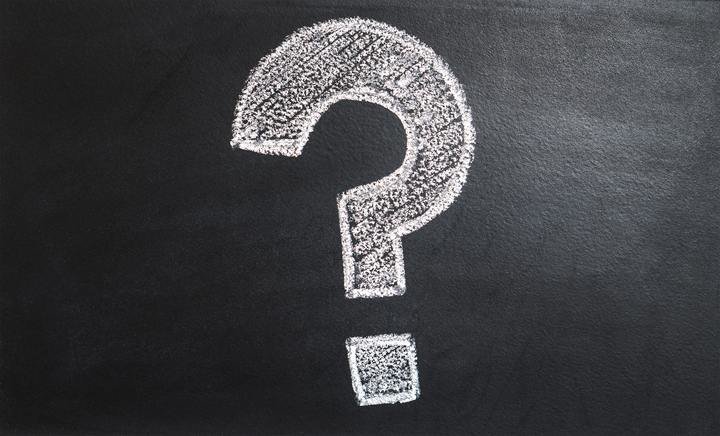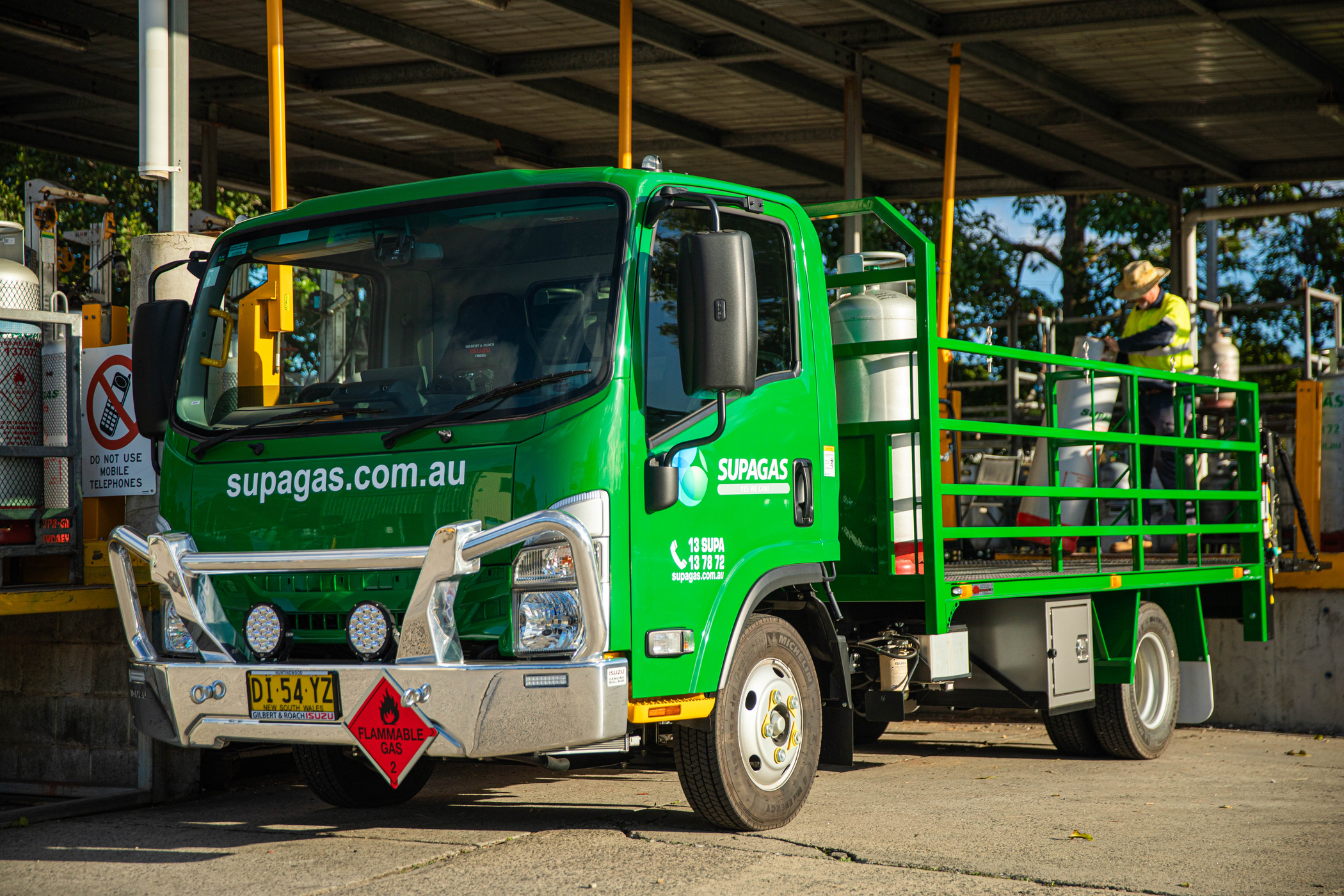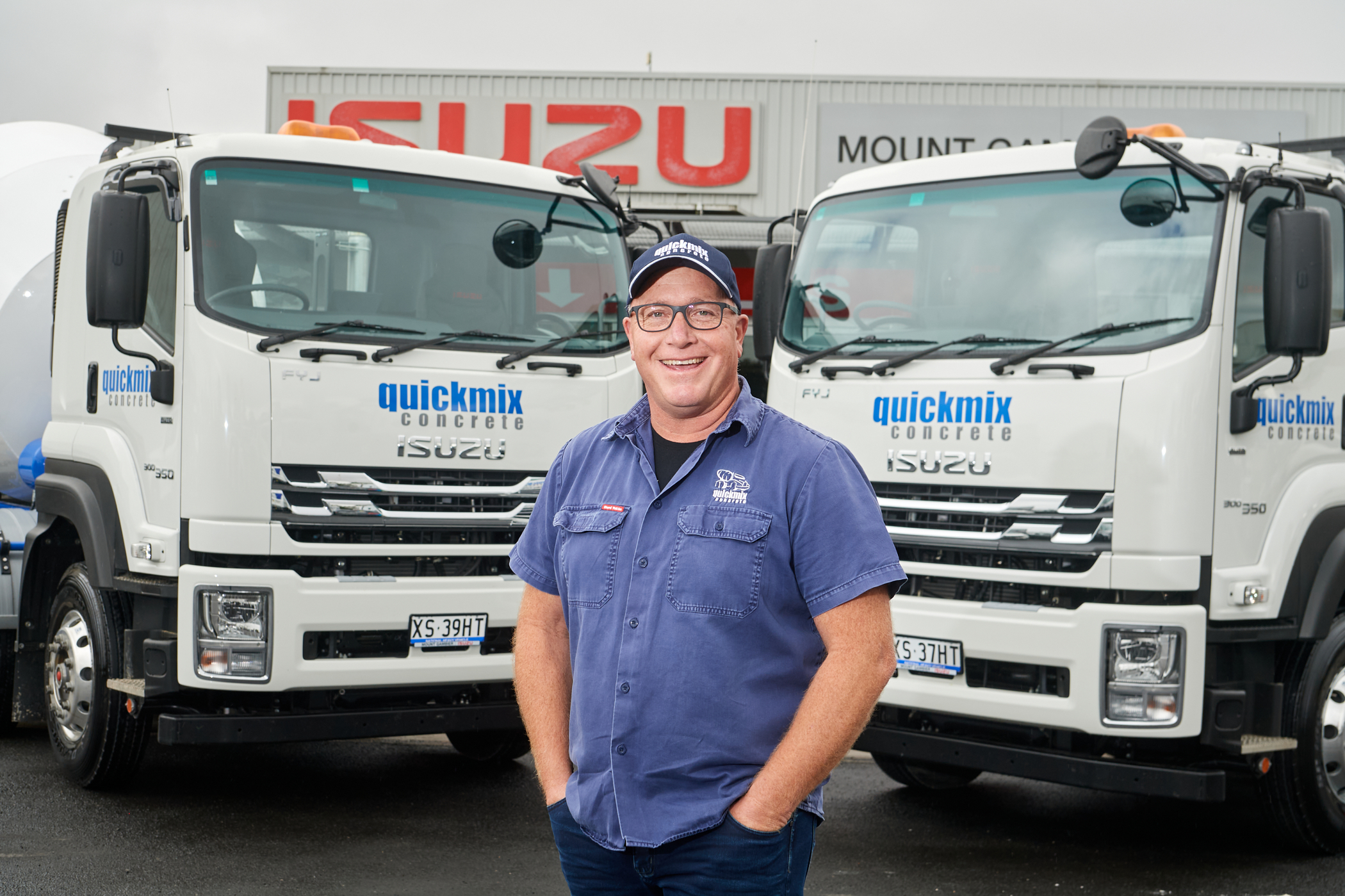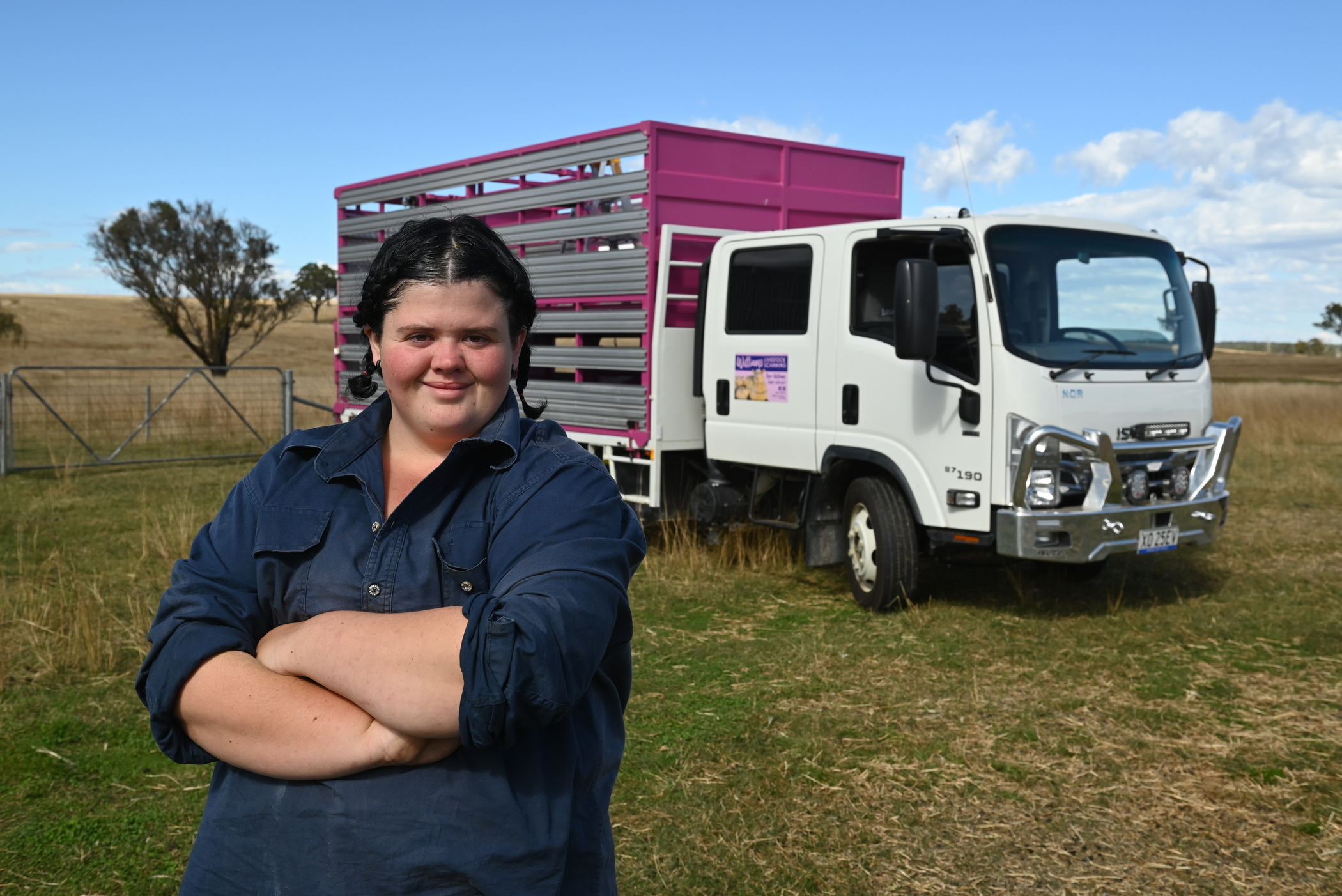COVID-19 STIMULUS PACKAGE: WHAT, WHEN, HOW

The COVID-19 crisis is still ongoing, and to support and safeguard the Australian economy during this unprecedented time, the federal government has introduced a range of measures to support Australian people and businesses.
Federal, state and territory governments have all taken action to strengthen the Australian economy and support individuals and small businesses, putting together various business stimulus packages.
As of the current date of publication, the government has committed significant resources to keep Australians in work and businesses in business—with potentially more funding to come.
All businesses, including sole traders and small-to-medium business owners, can find financial support from the various stimulus packages laid out to help operations now or to invest in recovery.
We unpack some of the stimulus measures for you.
 Instant asset write-off
The federal government has increased the instant asset write-off (IAWO) threshold, raising it to $150,000. Access to this has also been expanded to include businesses with an aggregated annual turnover of less than $500 million (up from $50 million). This applies from 12 March 2020 until 30 June 2021, for new or second‑hand assets first used or installed ready for use in this timeframe.
Under normal pre-COVID-19 circumstances, only individual assets less than $30,000 are eligible for increased IAWO. With the increased IAWO, eligible assets acquired and first used or installed by 30 June 2021 are able to be immediately deducted. This results in less tax paid on these eligible assets, improving cash flow.
Eligible assets include capital equipment, such as trucks and cars. Assets not eligible under the increased IAWO scheme can be found here.
Temporary full expensing
In addition to the instant asset write-off, the government has also announced business can choose temporary full expensing on eligible assets between 6 October 2020 to 30 June 2022.
This allows business with up to $5 billion in turnover to deduct the business portion of the cost of new eligible assets, with no dollar limit on the asset’s worth (meaning assets over $150,000 can be fully expensed).
For eligibility criteria and more information on temporary fully expensing, click here.
Temporary loss carry-back
The temporary loss carry-back measure allows businesses with turnover up to $5 billion to offset operating losses against previous profits on which tax has already been paid. This will apply to losses incurred during the 2019-20, 2020-21 and/or 2021-22 tax years.
Eligible companies can elect to receive a tax refund when they lodge 2020-21 and 2021- 22 tax returns. This measure is aimed at companies operating at a loss due to COVID-19 and can assist in boosting cash flow, retaining workers and encourage businesses to take advantage of full expensing while it is available.
For more information on the temporary loss carry-back measure, click here.
Backing Business Investment
Another federal government tax relief scheme for businesses is the Backing Business Investment (BBI) initiative.
This accelerates depreciation deductions and is a time-limited, 15-month investment incentive to support business investment and economic growth over the short term. This applies to eligible assets acquired from 12 March 2020 and first used or installed by 30 June 2021. The BBI is available to businesses with a turnover of less than $500 million.
Under the BBI scheme, eligible businesses will be able to deduct 50 per cent of the cost of an eligible asset on installation, with existing depreciation rules applying to the balance of the asset’s cost.
The BBI scheme is different from the IAWO in a number of ways, especially regarding eligibility of businesses and assets.
Under BBI, for the depreciating asset to be eligible, it must:
Instant asset write-off
The federal government has increased the instant asset write-off (IAWO) threshold, raising it to $150,000. Access to this has also been expanded to include businesses with an aggregated annual turnover of less than $500 million (up from $50 million). This applies from 12 March 2020 until 30 June 2021, for new or second‑hand assets first used or installed ready for use in this timeframe.
Under normal pre-COVID-19 circumstances, only individual assets less than $30,000 are eligible for increased IAWO. With the increased IAWO, eligible assets acquired and first used or installed by 30 June 2021 are able to be immediately deducted. This results in less tax paid on these eligible assets, improving cash flow.
Eligible assets include capital equipment, such as trucks and cars. Assets not eligible under the increased IAWO scheme can be found here.
Temporary full expensing
In addition to the instant asset write-off, the government has also announced business can choose temporary full expensing on eligible assets between 6 October 2020 to 30 June 2022.
This allows business with up to $5 billion in turnover to deduct the business portion of the cost of new eligible assets, with no dollar limit on the asset’s worth (meaning assets over $150,000 can be fully expensed).
For eligibility criteria and more information on temporary fully expensing, click here.
Temporary loss carry-back
The temporary loss carry-back measure allows businesses with turnover up to $5 billion to offset operating losses against previous profits on which tax has already been paid. This will apply to losses incurred during the 2019-20, 2020-21 and/or 2021-22 tax years.
Eligible companies can elect to receive a tax refund when they lodge 2020-21 and 2021- 22 tax returns. This measure is aimed at companies operating at a loss due to COVID-19 and can assist in boosting cash flow, retaining workers and encourage businesses to take advantage of full expensing while it is available.
For more information on the temporary loss carry-back measure, click here.
Backing Business Investment
Another federal government tax relief scheme for businesses is the Backing Business Investment (BBI) initiative.
This accelerates depreciation deductions and is a time-limited, 15-month investment incentive to support business investment and economic growth over the short term. This applies to eligible assets acquired from 12 March 2020 and first used or installed by 30 June 2021. The BBI is available to businesses with a turnover of less than $500 million.
Under the BBI scheme, eligible businesses will be able to deduct 50 per cent of the cost of an eligible asset on installation, with existing depreciation rules applying to the balance of the asset’s cost.
The BBI scheme is different from the IAWO in a number of ways, especially regarding eligibility of businesses and assets.
Under BBI, for the depreciating asset to be eligible, it must:
 Coronavirus SME Guarantee Scheme
To support credit flow in the Australia economy, and in particular for small and medium enterprises (SMEs), the federal government put in place the Coronavirus SME Guarantee Scheme. This sees the federal government, Reserve Bank of Australia and the Australian Prudential Regulation Authority working together to extend loans to businesses with a turnover of up to $50 million.
Phase 1 of the scheme commenced in early April 2020 and was available for new loans made by participating lenders. This ceased on 30 September 2020.
The scheme has now been extended, with Phase 2 of the scheme applicable between 1 October 2020 and 30 June 2021.
Under Phase 2 of the scheme, the federal government will provide a guarantee of 50 per cent to lenders for new unsecured loans to be used for working capital. This will result in SMEs being able to access additional funding to help support them through the upcoming months.
Key terms and conditions apply for Phase 2, as follows:
Coronavirus SME Guarantee Scheme
To support credit flow in the Australia economy, and in particular for small and medium enterprises (SMEs), the federal government put in place the Coronavirus SME Guarantee Scheme. This sees the federal government, Reserve Bank of Australia and the Australian Prudential Regulation Authority working together to extend loans to businesses with a turnover of up to $50 million.
Phase 1 of the scheme commenced in early April 2020 and was available for new loans made by participating lenders. This ceased on 30 September 2020.
The scheme has now been extended, with Phase 2 of the scheme applicable between 1 October 2020 and 30 June 2021.
Under Phase 2 of the scheme, the federal government will provide a guarantee of 50 per cent to lenders for new unsecured loans to be used for working capital. This will result in SMEs being able to access additional funding to help support them through the upcoming months.
Key terms and conditions apply for Phase 2, as follows:
 JobMaker Hiring Credit scheme
The JobMaker Hiring Credit is a tiered incentive available to eligible businesses that take on additional young workers between 7 October 2020 and 6 October 2021. It’s designed to support employment, and businesses do not need to prove a drop in turnover to meet eligibility criteria.
Employers can receive the JobMaker Hiring Credit for eligible workers between 16 to 35 years old:
JobMaker Hiring Credit scheme
The JobMaker Hiring Credit is a tiered incentive available to eligible businesses that take on additional young workers between 7 October 2020 and 6 October 2021. It’s designed to support employment, and businesses do not need to prove a drop in turnover to meet eligibility criteria.
Employers can receive the JobMaker Hiring Credit for eligible workers between 16 to 35 years old:
 Boosting Apprenticeship Commencements
The government introduced the Boosting Apprenticeships Commencement in a bid to build the pipeline of skilled workers to support sustained economic recovery.
This initiative targets eligible businesses who engage a new Australian apprentice between 5 October and 30 September 2021, with a subsidy of 50 per cent of wages paid to new or recommencing apprentices or trainees for a 12-month period from the date of commencement (to a maximum of $7,000 per quarter).
This program is in addition to the apprentice and trainee wage subsidy that concluded on 30 September 2020—see next point below.
Supporting apprentices and trainees
The supporting apprentices and trainees subsidy wrapped up on 30 September 2020.
If you’re looking for a recap of the program…
Eligible employers could apply for a wage subsidy of 50 per cent of the apprentice’s or trainee’s wage paid from 1 January 2020 to 30 September 2020. Where a small business was not able to retain an apprentice, the subsidy was available to a new employer.
Employers could be reimbursed up to a maximum of $21,000 per eligible apprentice or trainee ($7,000 per quarter).
The subsidy was available to small businesses employing fewer than 20 employees who retained an apprentice or trainee. Employers of any size, and Group Training Organisations that re‑engaged an eligible out‑of‑trade apprentice or trainee, were eligible for the subsidy. Additionally, the apprentice or trainee must have been in training with a small business as at 1 March 2020. Read here for further information.
Employers could register for the subsidy from early April 2020. Final claims for payment needed to be lodged by 31 December 2020.
You can contact an Australian Apprenticeship Support Network (AASN) provider for further information on government apprentice and trainee support programs.
Boosting Apprenticeship Commencements
The government introduced the Boosting Apprenticeships Commencement in a bid to build the pipeline of skilled workers to support sustained economic recovery.
This initiative targets eligible businesses who engage a new Australian apprentice between 5 October and 30 September 2021, with a subsidy of 50 per cent of wages paid to new or recommencing apprentices or trainees for a 12-month period from the date of commencement (to a maximum of $7,000 per quarter).
This program is in addition to the apprentice and trainee wage subsidy that concluded on 30 September 2020—see next point below.
Supporting apprentices and trainees
The supporting apprentices and trainees subsidy wrapped up on 30 September 2020.
If you’re looking for a recap of the program…
Eligible employers could apply for a wage subsidy of 50 per cent of the apprentice’s or trainee’s wage paid from 1 January 2020 to 30 September 2020. Where a small business was not able to retain an apprentice, the subsidy was available to a new employer.
Employers could be reimbursed up to a maximum of $21,000 per eligible apprentice or trainee ($7,000 per quarter).
The subsidy was available to small businesses employing fewer than 20 employees who retained an apprentice or trainee. Employers of any size, and Group Training Organisations that re‑engaged an eligible out‑of‑trade apprentice or trainee, were eligible for the subsidy. Additionally, the apprentice or trainee must have been in training with a small business as at 1 March 2020. Read here for further information.
Employers could register for the subsidy from early April 2020. Final claims for payment needed to be lodged by 31 December 2020.
You can contact an Australian Apprenticeship Support Network (AASN) provider for further information on government apprentice and trainee support programs.
 JobKeeper Payment
The federal government’s JobKeeper Payment scheme ended on 28 March 2021.
If you’re looking for a recap of the program…
The federal government announced a wage subsidy program for businesses impacted by COVID-19, offering a fortnightly payment of $1,500 per employee until 28 March 2021.
Employer eligibility for this subsidy was subject to the following requirements:
JobKeeper Payment
The federal government’s JobKeeper Payment scheme ended on 28 March 2021.
If you’re looking for a recap of the program…
The federal government announced a wage subsidy program for businesses impacted by COVID-19, offering a fortnightly payment of $1,500 per employee until 28 March 2021.
Employer eligibility for this subsidy was subject to the following requirements:

 Instant asset write-off
The federal government has increased the instant asset write-off (IAWO) threshold, raising it to $150,000. Access to this has also been expanded to include businesses with an aggregated annual turnover of less than $500 million (up from $50 million). This applies from 12 March 2020 until 30 June 2021, for new or second‑hand assets first used or installed ready for use in this timeframe.
Under normal pre-COVID-19 circumstances, only individual assets less than $30,000 are eligible for increased IAWO. With the increased IAWO, eligible assets acquired and first used or installed by 30 June 2021 are able to be immediately deducted. This results in less tax paid on these eligible assets, improving cash flow.
Eligible assets include capital equipment, such as trucks and cars. Assets not eligible under the increased IAWO scheme can be found here.
Temporary full expensing
In addition to the instant asset write-off, the government has also announced business can choose temporary full expensing on eligible assets between 6 October 2020 to 30 June 2022.
This allows business with up to $5 billion in turnover to deduct the business portion of the cost of new eligible assets, with no dollar limit on the asset’s worth (meaning assets over $150,000 can be fully expensed).
For eligibility criteria and more information on temporary fully expensing, click here.
Temporary loss carry-back
The temporary loss carry-back measure allows businesses with turnover up to $5 billion to offset operating losses against previous profits on which tax has already been paid. This will apply to losses incurred during the 2019-20, 2020-21 and/or 2021-22 tax years.
Eligible companies can elect to receive a tax refund when they lodge 2020-21 and 2021- 22 tax returns. This measure is aimed at companies operating at a loss due to COVID-19 and can assist in boosting cash flow, retaining workers and encourage businesses to take advantage of full expensing while it is available.
For more information on the temporary loss carry-back measure, click here.
Backing Business Investment
Another federal government tax relief scheme for businesses is the Backing Business Investment (BBI) initiative.
This accelerates depreciation deductions and is a time-limited, 15-month investment incentive to support business investment and economic growth over the short term. This applies to eligible assets acquired from 12 March 2020 and first used or installed by 30 June 2021. The BBI is available to businesses with a turnover of less than $500 million.
Under the BBI scheme, eligible businesses will be able to deduct 50 per cent of the cost of an eligible asset on installation, with existing depreciation rules applying to the balance of the asset’s cost.
The BBI scheme is different from the IAWO in a number of ways, especially regarding eligibility of businesses and assets.
Under BBI, for the depreciating asset to be eligible, it must:
Instant asset write-off
The federal government has increased the instant asset write-off (IAWO) threshold, raising it to $150,000. Access to this has also been expanded to include businesses with an aggregated annual turnover of less than $500 million (up from $50 million). This applies from 12 March 2020 until 30 June 2021, for new or second‑hand assets first used or installed ready for use in this timeframe.
Under normal pre-COVID-19 circumstances, only individual assets less than $30,000 are eligible for increased IAWO. With the increased IAWO, eligible assets acquired and first used or installed by 30 June 2021 are able to be immediately deducted. This results in less tax paid on these eligible assets, improving cash flow.
Eligible assets include capital equipment, such as trucks and cars. Assets not eligible under the increased IAWO scheme can be found here.
Temporary full expensing
In addition to the instant asset write-off, the government has also announced business can choose temporary full expensing on eligible assets between 6 October 2020 to 30 June 2022.
This allows business with up to $5 billion in turnover to deduct the business portion of the cost of new eligible assets, with no dollar limit on the asset’s worth (meaning assets over $150,000 can be fully expensed).
For eligibility criteria and more information on temporary fully expensing, click here.
Temporary loss carry-back
The temporary loss carry-back measure allows businesses with turnover up to $5 billion to offset operating losses against previous profits on which tax has already been paid. This will apply to losses incurred during the 2019-20, 2020-21 and/or 2021-22 tax years.
Eligible companies can elect to receive a tax refund when they lodge 2020-21 and 2021- 22 tax returns. This measure is aimed at companies operating at a loss due to COVID-19 and can assist in boosting cash flow, retaining workers and encourage businesses to take advantage of full expensing while it is available.
For more information on the temporary loss carry-back measure, click here.
Backing Business Investment
Another federal government tax relief scheme for businesses is the Backing Business Investment (BBI) initiative.
This accelerates depreciation deductions and is a time-limited, 15-month investment incentive to support business investment and economic growth over the short term. This applies to eligible assets acquired from 12 March 2020 and first used or installed by 30 June 2021. The BBI is available to businesses with a turnover of less than $500 million.
Under the BBI scheme, eligible businesses will be able to deduct 50 per cent of the cost of an eligible asset on installation, with existing depreciation rules applying to the balance of the asset’s cost.
The BBI scheme is different from the IAWO in a number of ways, especially regarding eligibility of businesses and assets.
Under BBI, for the depreciating asset to be eligible, it must:
- be new and not previously held by another entity (other than as trading stock);
- not be an asset to which an entity has applied depreciation deductions or the instant asset write-off rules;
- be first held on or after 12 March 2020;
- first used or first installed ready for use for a taxable purpose on or after 12 March 2020 until 30 June 2021.
 Coronavirus SME Guarantee Scheme
To support credit flow in the Australia economy, and in particular for small and medium enterprises (SMEs), the federal government put in place the Coronavirus SME Guarantee Scheme. This sees the federal government, Reserve Bank of Australia and the Australian Prudential Regulation Authority working together to extend loans to businesses with a turnover of up to $50 million.
Phase 1 of the scheme commenced in early April 2020 and was available for new loans made by participating lenders. This ceased on 30 September 2020.
The scheme has now been extended, with Phase 2 of the scheme applicable between 1 October 2020 and 30 June 2021.
Under Phase 2 of the scheme, the federal government will provide a guarantee of 50 per cent to lenders for new unsecured loans to be used for working capital. This will result in SMEs being able to access additional funding to help support them through the upcoming months.
Key terms and conditions apply for Phase 2, as follows:
Coronavirus SME Guarantee Scheme
To support credit flow in the Australia economy, and in particular for small and medium enterprises (SMEs), the federal government put in place the Coronavirus SME Guarantee Scheme. This sees the federal government, Reserve Bank of Australia and the Australian Prudential Regulation Authority working together to extend loans to businesses with a turnover of up to $50 million.
Phase 1 of the scheme commenced in early April 2020 and was available for new loans made by participating lenders. This ceased on 30 September 2020.
The scheme has now been extended, with Phase 2 of the scheme applicable between 1 October 2020 and 30 June 2021.
Under Phase 2 of the scheme, the federal government will provide a guarantee of 50 per cent to lenders for new unsecured loans to be used for working capital. This will result in SMEs being able to access additional funding to help support them through the upcoming months.
Key terms and conditions apply for Phase 2, as follows:
- borrowers can access up to $1 million in total;
- the loans will be up to 5 years, and a repayment holiday in not required, but can be offered at the discretion of the lender;
- the loans can be both secured (excluding residential property) and unsecured, meaning that borrowers will not have to provide an asset as security for the loan in some cases;
- interest rates on loans will be capped at around 10 per cent, with variations determined by lenders.
 JobMaker Hiring Credit scheme
The JobMaker Hiring Credit is a tiered incentive available to eligible businesses that take on additional young workers between 7 October 2020 and 6 October 2021. It’s designed to support employment, and businesses do not need to prove a drop in turnover to meet eligibility criteria.
Employers can receive the JobMaker Hiring Credit for eligible workers between 16 to 35 years old:
JobMaker Hiring Credit scheme
The JobMaker Hiring Credit is a tiered incentive available to eligible businesses that take on additional young workers between 7 October 2020 and 6 October 2021. It’s designed to support employment, and businesses do not need to prove a drop in turnover to meet eligibility criteria.
Employers can receive the JobMaker Hiring Credit for eligible workers between 16 to 35 years old:
- 16 to 29 years > $200 per week credit
- 30 to 35 years > $100 per week credit
 Boosting Apprenticeship Commencements
The government introduced the Boosting Apprenticeships Commencement in a bid to build the pipeline of skilled workers to support sustained economic recovery.
This initiative targets eligible businesses who engage a new Australian apprentice between 5 October and 30 September 2021, with a subsidy of 50 per cent of wages paid to new or recommencing apprentices or trainees for a 12-month period from the date of commencement (to a maximum of $7,000 per quarter).
This program is in addition to the apprentice and trainee wage subsidy that concluded on 30 September 2020—see next point below.
Supporting apprentices and trainees
The supporting apprentices and trainees subsidy wrapped up on 30 September 2020.
If you’re looking for a recap of the program…
Eligible employers could apply for a wage subsidy of 50 per cent of the apprentice’s or trainee’s wage paid from 1 January 2020 to 30 September 2020. Where a small business was not able to retain an apprentice, the subsidy was available to a new employer.
Employers could be reimbursed up to a maximum of $21,000 per eligible apprentice or trainee ($7,000 per quarter).
The subsidy was available to small businesses employing fewer than 20 employees who retained an apprentice or trainee. Employers of any size, and Group Training Organisations that re‑engaged an eligible out‑of‑trade apprentice or trainee, were eligible for the subsidy. Additionally, the apprentice or trainee must have been in training with a small business as at 1 March 2020. Read here for further information.
Employers could register for the subsidy from early April 2020. Final claims for payment needed to be lodged by 31 December 2020.
You can contact an Australian Apprenticeship Support Network (AASN) provider for further information on government apprentice and trainee support programs.
Boosting Apprenticeship Commencements
The government introduced the Boosting Apprenticeships Commencement in a bid to build the pipeline of skilled workers to support sustained economic recovery.
This initiative targets eligible businesses who engage a new Australian apprentice between 5 October and 30 September 2021, with a subsidy of 50 per cent of wages paid to new or recommencing apprentices or trainees for a 12-month period from the date of commencement (to a maximum of $7,000 per quarter).
This program is in addition to the apprentice and trainee wage subsidy that concluded on 30 September 2020—see next point below.
Supporting apprentices and trainees
The supporting apprentices and trainees subsidy wrapped up on 30 September 2020.
If you’re looking for a recap of the program…
Eligible employers could apply for a wage subsidy of 50 per cent of the apprentice’s or trainee’s wage paid from 1 January 2020 to 30 September 2020. Where a small business was not able to retain an apprentice, the subsidy was available to a new employer.
Employers could be reimbursed up to a maximum of $21,000 per eligible apprentice or trainee ($7,000 per quarter).
The subsidy was available to small businesses employing fewer than 20 employees who retained an apprentice or trainee. Employers of any size, and Group Training Organisations that re‑engaged an eligible out‑of‑trade apprentice or trainee, were eligible for the subsidy. Additionally, the apprentice or trainee must have been in training with a small business as at 1 March 2020. Read here for further information.
Employers could register for the subsidy from early April 2020. Final claims for payment needed to be lodged by 31 December 2020.
You can contact an Australian Apprenticeship Support Network (AASN) provider for further information on government apprentice and trainee support programs.
 JobKeeper Payment
The federal government’s JobKeeper Payment scheme ended on 28 March 2021.
If you’re looking for a recap of the program…
The federal government announced a wage subsidy program for businesses impacted by COVID-19, offering a fortnightly payment of $1,500 per employee until 28 March 2021.
Employer eligibility for this subsidy was subject to the following requirements:
JobKeeper Payment
The federal government’s JobKeeper Payment scheme ended on 28 March 2021.
If you’re looking for a recap of the program…
The federal government announced a wage subsidy program for businesses impacted by COVID-19, offering a fortnightly payment of $1,500 per employee until 28 March 2021.
Employer eligibility for this subsidy was subject to the following requirements:
- the business had an aggregated turnover of less than $1 billion (for income tax purposes) and they estimated their turnover had fallen by more than 30 per cent or more; or
- the business had an annual turnover of $1 billion or more (for income tax purposes) and they estimated their turnover had fallen or would likely fall by more than 50 per cent; and
- the business was not subject to the Major Bank Levy.



Take a load off with six years’ servicing for the price of three.*
For a short time, if you buy a selected N Series cab chassis or Ready-to-Work truck you can add a 6-Year Essentials Service Agreement Package for the price of three years, effectively halving your servicing costs. T&Cs apply.
Get a Quote



